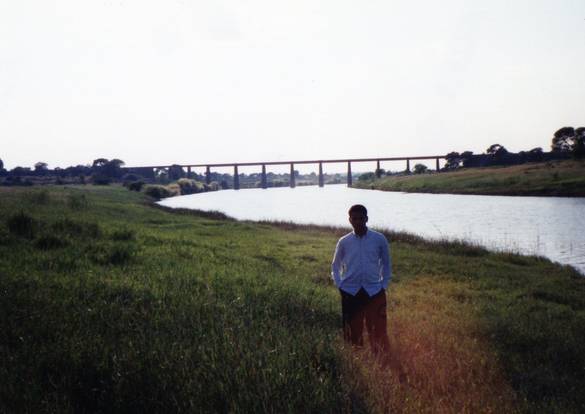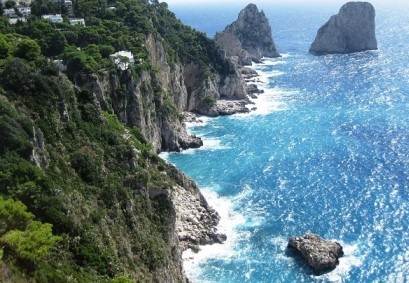The fossil-rich Manjra Valley near Latur is one of three regions in India which shows human presence 50,000 years ago.
 by Dr Vijay Sathe
by Dr Vijay Sathe
A 10 minutes’ drive from the city of Latur on the Latur–Ambajogai state highway takes us to the Manjra valley, the one and only record of fossils in a primary context in peninsular India, comparable in richness of skeletal and species diversity to the Siwaliks of the North West and Central Narmada Valley in Central India. The miracles of fossil preservation within a stretch of a couple of hundred metres, the fossil bone bed on the left bank of the Manjra river, unfold an unbelievable story of the palaeo-environment of the region which was dramatically different from the drought-stricken landscape that it is today. The Valley is an ancient ecosystem locked in time, since in the present scenario it is inconceivable that such animals inhabited this landscape.
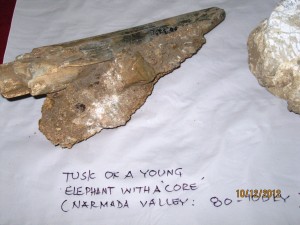 Today’s dry river bed, with pits dug into it to draw water for irrigation and drinking purposes, belies the existence of a wide variety of past fauna, indicated by the fossilised remains of animals ranging from large ones like elephants, rhinos and hippos to smaller ones like tortoise and even the large cats, which probably enjoyed supremacy in the prehistoric jungles!
Today’s dry river bed, with pits dug into it to draw water for irrigation and drinking purposes, belies the existence of a wide variety of past fauna, indicated by the fossilised remains of animals ranging from large ones like elephants, rhinos and hippos to smaller ones like tortoise and even the large cats, which probably enjoyed supremacy in the prehistoric jungles!
After I discovered this remarkable fossil-rich horizon in the year 2003, I led several expeditions of the Deccan College team to explore and study the fascinating faunal remains. The only thing missing from it was the evidence of human presence. And then, in 2009 came the startling discovery of Acheulian artefacts right next door in the ossiferous gravels, barely a 100 meters away from the prehistoric tomb of large mammals, confirming that human being shared this habitat with the animals as far back as 50,000 years ago!
This finally completed the circle, confirming that the region was throbbing with ancient human activities and these animals must have played the pivotal role of a rich source of sustenance.
The region captures an interesting moment in the history of life in this part of Maharashtra. Fossilised remains show that tiger, 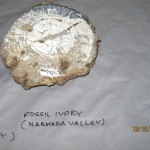 rhinoceros, horse, elephant, hippos, cattle, buffalo, spotted deer, swamp deer, sambar, black buck, tortoise and hundreds of gastropods (mollusca) lived and perished along the stagnant water bodies that were the ‘aquatic dens’ to amphibians like hippos along the course of the river Manjra.
rhinoceros, horse, elephant, hippos, cattle, buffalo, spotted deer, swamp deer, sambar, black buck, tortoise and hundreds of gastropods (mollusca) lived and perished along the stagnant water bodies that were the ‘aquatic dens’ to amphibians like hippos along the course of the river Manjra.
There has been no displacement of these bones from their actual place of burial, indicating that life, death, burial and fossilisation of these skeletal remains were confined to the Valley. Even though the region is semi-arid today, the presence of the hippo, an amphibian, shows that the region once had a wet climate. Even elephants, rhinos and deer could feed adequately on the sheets of grasslands and vegetation in the galleria forests along the banks of the meandering course of the Manjra. The presence of tiger completes the pyramid!
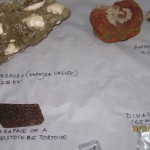 However, today when we walk along the fossil bed, we are woken up to the rude shock of the sudden disappearance of this treasure trove of natural history. Severe water scarcity leaves the crops, livestock, people in villages as well as surrounding towns high and dry for decades together. A series of small dams on the river Manjra following the recent monsoons, became active bunds a year ago and finally swallowed one of the richest fossil beds of peninsular India permanently. The dams have been a major respite for the local farmer and his livestock. But the price the heritage has paid is enormous!
However, today when we walk along the fossil bed, we are woken up to the rude shock of the sudden disappearance of this treasure trove of natural history. Severe water scarcity leaves the crops, livestock, people in villages as well as surrounding towns high and dry for decades together. A series of small dams on the river Manjra following the recent monsoons, became active bunds a year ago and finally swallowed one of the richest fossil beds of peninsular India permanently. The dams have been a major respite for the local farmer and his livestock. But the price the heritage has paid is enormous!
The river basins of Western Maharashtra yield vital clues for understanding patterns of cultural evolution of prehistoric man and his biological landscape, especially with respect to contemporary animal diversity as a rich source of subsistence. The stone tools found among the fossils fall into the time bracket between 25,000 and 1.2 million years ago. The fossilised remains of prehistoric animals like carnivores, horses, rodents, elephants, hippopotamus, cattle, buffalo, etc. found embedded in ancient gravels in the Godavari-Pravara basin, Mula-Mutha, Ghod and Bhima river valleys suggest a picture of adequate vegetation cover interspersed with swamps and perennial water bodies along the drainage systems. It is hardly surprising that prehistoric man found the landscape congenial for the exploitation of natural resources, including the raw material available in close proximity for making a variety of artefacts like handaxes, cleavers, scrapers etc.
Manjra Valley is the only site in peninsular India that has yielded near-complete skeletons of a wide diversity of animals. It is a model site because the fossils and stone tools here are undisturbed in their original context and not a product of erosion and reburial. Hence it is of critical importance in the reconstruction of the paleo-environment of the region.
Dr Vijay Sathe is a researcher in vertebrate palaeontology, palaeoecology, and prehistoric rock art and teaches at the Deccan College Postgraduate and Research Institute, Pune.

